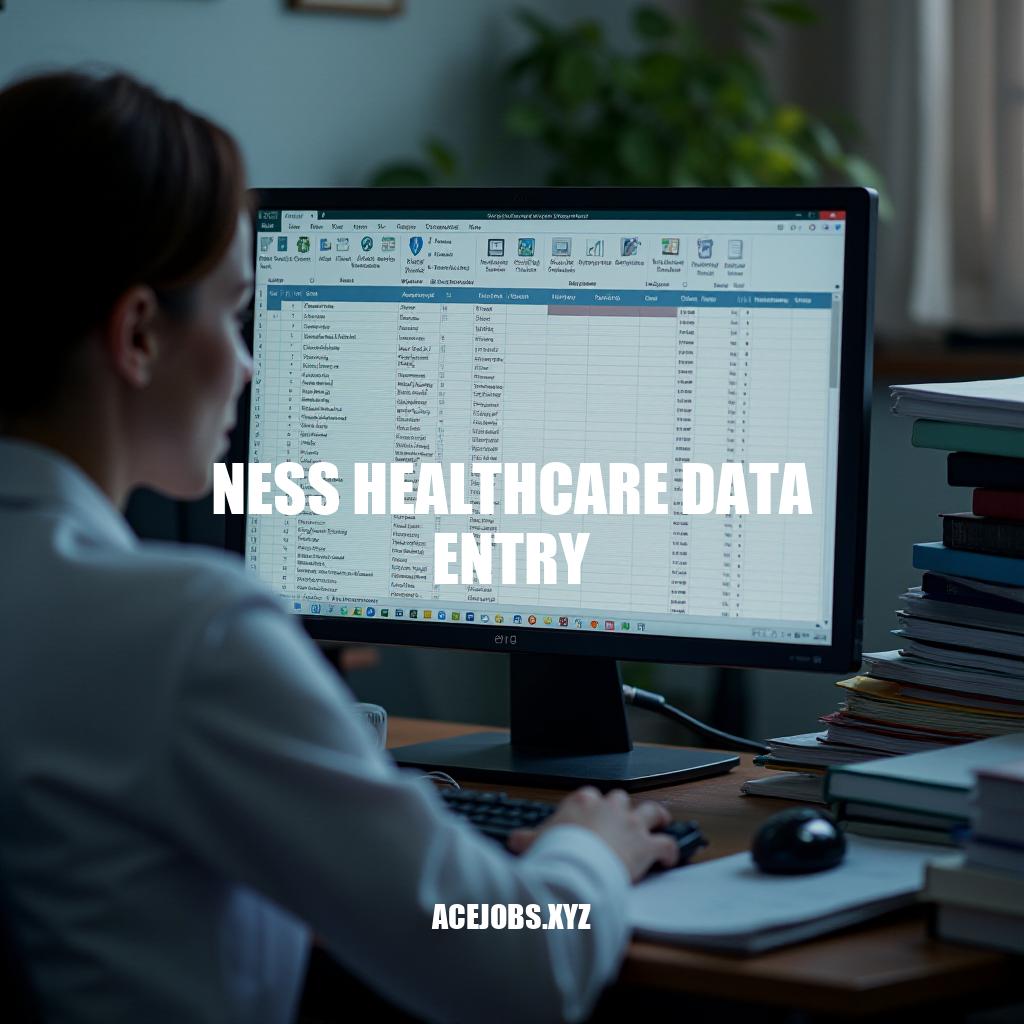
Ness healthcare data entry plays a pivotal role in modern medicine by ensuring the seamless collection and management of patient information. Accurate data entry enables healthcare providers to maintain comprehensive patient records, which are essential for delivering personalized care, tracking medical histories, and making informed treatment decisions. With the increasing reliance on electronic health records (EHRs), the integrity and precision of data entry have become crucial for operational efficiency, patient safety, and regulatory compliance.
Integrating advanced technologies such as AI and machine learning into data entry processes can further enhance accuracy, reduce administrative burdens, and improve overall healthcare outcomes, making it a cornerstone of effective healthcare delivery.
Understanding Ness Healthcare Data Entry
NESS healthcare data entry involves capturing, verifying, and managing patient and clinical data using advanced technologies and methodologies. The process includes eSource data capture at the point-of-care, ensuring real-time data collection and immediate upload to secure databases. Technologies like NEForm facilitate this by providing mobile solutions for data entry, supporting electronic Case Report Forms (eCRFs), electronic Patient Reported Outcomes (ePRO), and Clinical Outcomes Assessment (COA) data.
Skills required for NESS healthcare data entry include proficiency in medical software, typing speed and accuracy, attention to detail, medical terminology knowledge, time management, and data security practices.
Data entry professionals must also be adept at organizing and validating data, transcribing information accurately, and maintaining patient confidentiality.
Benefits of Ness Healthcare Data Entry
Efficient healthcare data entry is a game changer. Enhanced patient care emerges from accurate, up-to-date patient records, facilitating precise treatment plans and reducing medical errors. Streamlined operations mean healthcare providers spend less time on paperwork, giving them more time with patients.
Accurate data management underpins critical decision-making, leading to improved outcomes and optimized resources. It also ensures compliance with regulations, reduces redundant tests, and enhances overall healthcare efficiency.
Challenges in Ness Healthcare Data Entry
-
Data Security: Protecting sensitive patient information from breaches and unauthorized access.
-
Accuracy: Ensuring that all entered data is correct and free from errors to avoid misdiagnoses and incorrect treatments.
-
Staff Training: Providing adequate training to staff to handle data entry tasks efficiently and accurately.
Best Practices for Ness Healthcare Data Entry
-
Standardize Data Entry Processes: Implement consistent templates and dropdown menus to ensure uniformity in data entry. Use automated data validation checks to reduce errors and enhance data quality.
-
Implement User-friendly Interfaces: Design intuitive interfaces to streamline navigation and reduce errors. Simplified designs save time and improve workflow efficiency.
-
Ensure Interoperability with Other Systems: Facilitate seamless data exchange between different healthcare systems to improve care coordination and patient outcomes.
-
Provide Comprehensive Training for Users: Conduct regular training sessions to reinforce standardized data entry protocols and promote continuous improvement.
-
Regularly Update and Optimize Software: Keep software up-to-date to ensure compatibility with new technologies and address any emerging security vulnerabilities.
-
Implement Robust Security Measures: Use encryption techniques, multi-factor authentication, and access controls to protect patient data from unauthorized access and breaches.
-
Streamline Workflows and Automate Routine Tasks: Automate repetitive tasks to reduce manual data entry and minimize the risk of human error.
-
Utilize Machine Learning for Data Anomaly Detection: Implement machine learning algorithms to detect and address data anomalies, improving overall data accuracy.
-
Conduct Regular Risk Assessments: Perform frequent risk assessments to identify potential vulnerabilities and implement necessary safeguards.
-
Adopt Electronic Health Records (EHRs): Use EHR systems to store comprehensive patient information, ensuring accuracy and accessibility.
By following these strategies, healthcare organizations can optimize data entry processes, enhance data accuracy, ensure security, and leverage advanced technologies for better patient care and outcomes.
Ness Healthcare Data Entry: A Crucial Role in Modern Medicine
NESS healthcare data entry plays a crucial role in modern medicine by ensuring accurate collection and management of patient information. It enables healthcare providers to maintain comprehensive records, track medical histories, and make informed treatment decisions. Advanced technologies like AI and machine learning can enhance accuracy, reduce administrative burdens, and improve outcomes.
The Process of Ness Healthcare Data Entry
The process involves capturing, verifying, and managing patient data using advanced technologies and methodologies. Skills required for NESS healthcare data entry include proficiency in medical software, typing speed and accuracy, attention to detail, medical terminology knowledge, time management, and data security practices.
Benefits of Efficient Healthcare Data Entry
Efficient healthcare data entry is a game changer, leading to enhanced patient care, precise treatment plans, reduced medical errors, and improved outcomes. Accurate data management underpins critical decision-making, ensuring compliance with regulations, reducing redundant tests, and enhancing overall healthcare efficiency.
Key Strategies for Optimizing Data Entry Processes
- Standardizing data entry processes
- Implementing user-friendly interfaces
- Ensuring interoperability with other systems
- Providing comprehensive training for users
- Regularly updating and optimizing software
- Implementing robust security measures
- Streamlining workflows and automating routine tasks
- Utilizing machine learning for data anomaly detection
- Conducting regular risk assessments
- Aadopting electronic health records (EHRs)
By following these strategies, healthcare organizations can optimize data entry processes, enhance data accuracy, ensure security, and leverage advanced technologies for better patient care and outcomes.


